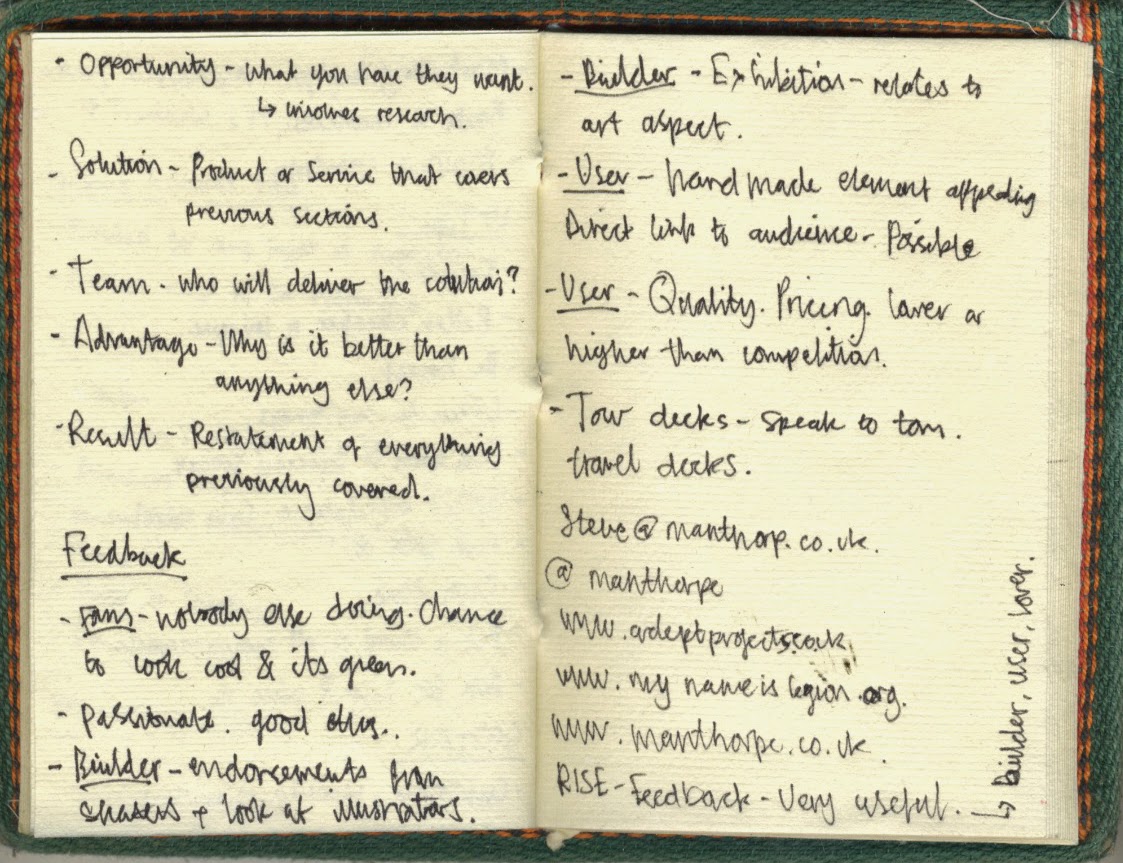Today I attended the second, extra curricular 'Start Up Wednesdays' session hosted for students that want to set up their own business or enterprise.
In the session we had a guest speaker named Steve Manthorpe, a practicing artist who is also involved with various other enterprises such as Light Night in Leeds.
The session was started by going through the basics of what makes a business, notes that were taken during this part of the session are listed below;
Additionally, at the end of the session we were given a print out that featured the slides Steve talked through during the session, this is useful as it features information that I missed.
After Steve talked though the specifics of what makes a business we were divided into small groups to complete a task. Using the 'COSTAR' method of assessment we were asked to talk though a business idea using each of the sections listed below;
- Customer - Identify, characterise, role-play.
- Opportunity - What you have they want.
- Solution - Product or service you will offer - covers previous sections.
- Team - Who will deliver the solution?
- Advantage - Why is it better than anything else?
- Result - Summary of most important points discussed.
As I had the most developed idea of my group we decided to use the 'COSTAR' assessment method to evaluate my business concept. Notes were listed on large sheets which I stupidly forgot to take pictures of.
After creating points for each section of the assessment method on large pieces of paper we had to present the idea to the rest of the group, who then in-turn gave feedback on the idea.
Something that really grabbed my attention, other than the feedback given on my idea, was the method used to organise and create the feedback. Steve used a method called 'RISE' which divided the group giving the feedback into three sections; Fans, Builders & Users. It was the job of the fan to list all the positives they perceived from the idea setting a positive tone immediately. Next, it was the job of the builders to offer feedback that built upon the idea, giving information on what could be done to possibly improve it. Finally, it was the job of the user, who had to imagine they were a part of the target audience to say if the idea appeal to them and why. The feedback method worked really effectively, allowed students to discuss ideas and generated lots of informed useable information. In fact, I found the method so efficient that I plan to propose using it in future criticisms.
Overall, I thought the session was really useful, gave me plenty of relevant information and filled me with confidence about my idea.






No comments:
Post a Comment